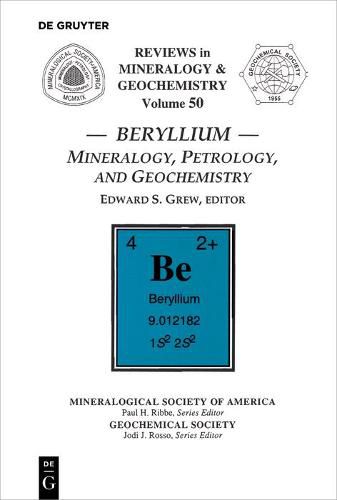Readings Newsletter
Become a Readings Member to make your shopping experience even easier.
Sign in or sign up for free!
You’re not far away from qualifying for FREE standard shipping within Australia
You’ve qualified for FREE standard shipping within Australia
The cart is loading…






This title is printed to order. This book may have been self-published. If so, we cannot guarantee the quality of the content. In the main most books will have gone through the editing process however some may not. We therefore suggest that you be aware of this before ordering this book. If in doubt check either the author or publisher’s details as we are unable to accept any returns unless they are faulty. Please contact us if you have any questions.
Volume 50 of Reviews in Mineralogy and Geochemistry treats Beryllium and its cosmogenic isotopes. This volume includes an overview of Be studies in the earth sciences and a systematic classification of Be minerals based on their crystal structure. It treats the analysis of these minerals by the secondary ion mass spectroscopy as well as experimental studies of systems involving Be. Moreover, this volume reviews the behavior of Be in the Solar System, with an emphasis on meteorites, the Moon and Mars, and the implications of this behavior for the evolution of the solar system. It gives an overview of the terrestrial geochemistry of Be and discusses the contamination of the environment by this anthropogenic toxin. It reports use of the longer lived Be-10 to assess erosion rates and other surficial processes and how this isotope can yield independent temporal records of geomagnetic field variations for comparison with records obtained by measuring natural remnant magnetization, be a chemical tracer for processes in convergent margins, and can date events in Cenozoic tectonics. It reviews applications of the shorter lived isotope Be-7 in environmental studies as well. Residual phases include acidic plutonic and volcanic rocks, whose geochemistry and evolution are covered, while granitic pegmatites, which are well-known for their remarkable, if localized, Be enrichments and a wide variety of Be mineral assemblages, are reviewed. Not all Be concentrations have obvious magmatic affinities; for example, one class of emerald deposits results from Be being introduced by heated brines. Pelitic rocks are an important reservoir of Be in the Earth’s crust and their metamorphism plays a critical role in recycling of Be in subduction zones, eventually, anatectic processes complete the cycle, providing a source of Be for granitic rocks.
$9.00 standard shipping within Australia
FREE standard shipping within Australia for orders over $100.00
Express & International shipping calculated at checkout
This title is printed to order. This book may have been self-published. If so, we cannot guarantee the quality of the content. In the main most books will have gone through the editing process however some may not. We therefore suggest that you be aware of this before ordering this book. If in doubt check either the author or publisher’s details as we are unable to accept any returns unless they are faulty. Please contact us if you have any questions.
Volume 50 of Reviews in Mineralogy and Geochemistry treats Beryllium and its cosmogenic isotopes. This volume includes an overview of Be studies in the earth sciences and a systematic classification of Be minerals based on their crystal structure. It treats the analysis of these minerals by the secondary ion mass spectroscopy as well as experimental studies of systems involving Be. Moreover, this volume reviews the behavior of Be in the Solar System, with an emphasis on meteorites, the Moon and Mars, and the implications of this behavior for the evolution of the solar system. It gives an overview of the terrestrial geochemistry of Be and discusses the contamination of the environment by this anthropogenic toxin. It reports use of the longer lived Be-10 to assess erosion rates and other surficial processes and how this isotope can yield independent temporal records of geomagnetic field variations for comparison with records obtained by measuring natural remnant magnetization, be a chemical tracer for processes in convergent margins, and can date events in Cenozoic tectonics. It reviews applications of the shorter lived isotope Be-7 in environmental studies as well. Residual phases include acidic plutonic and volcanic rocks, whose geochemistry and evolution are covered, while granitic pegmatites, which are well-known for their remarkable, if localized, Be enrichments and a wide variety of Be mineral assemblages, are reviewed. Not all Be concentrations have obvious magmatic affinities; for example, one class of emerald deposits results from Be being introduced by heated brines. Pelitic rocks are an important reservoir of Be in the Earth’s crust and their metamorphism plays a critical role in recycling of Be in subduction zones, eventually, anatectic processes complete the cycle, providing a source of Be for granitic rocks.